A linguistic lesson: "Spisske" is the name for the region in Slovakia. "Pod", the same in Russian and Ukrainian, means "under". "Hrad", I learned quickly, is the Slovakian word for castle ("Zamok" in Ukranian and Russian; sometimes the langauges don't line up at all). So, shifting "Hrad" to the locative case, you have a town that means it's in Spisske reason and it's under a castle. A big ass castle. You couldn't possibly name this town in relation to anything else because every view from this town is dominated by that enormous castle on the hill.
Bury an aircraft carrier on the top of a hill 2/3rds up the keel. The width and height to the deck would be the perimeter of this castle's wall, the superstructure would be the size of the keep and the turret. That's how big this castle is.
Carrie and I had meant to be on the top of Poland, hiking through the Tatras from the Slovakian side, over the border and to the top of a mountain called Kysy. Dark clouds swirling around the mountains, obscuring the peaks sent us on a day trip south. And instead we found ourselves at the top of the turret of one of the largest in all of Europe and the largest in Central Europe, a UNESCO treasure that has never been militarily taken.
At the bottom of the hill was a beautiful cemetary. Slovakians have th tradition of marking graves not just with a headstone, but a slab of stone the length and width of the coffin. Many of these slabs were hollow in the middle, filled with earth and used as planters, many with beautiful flowers in bloom.
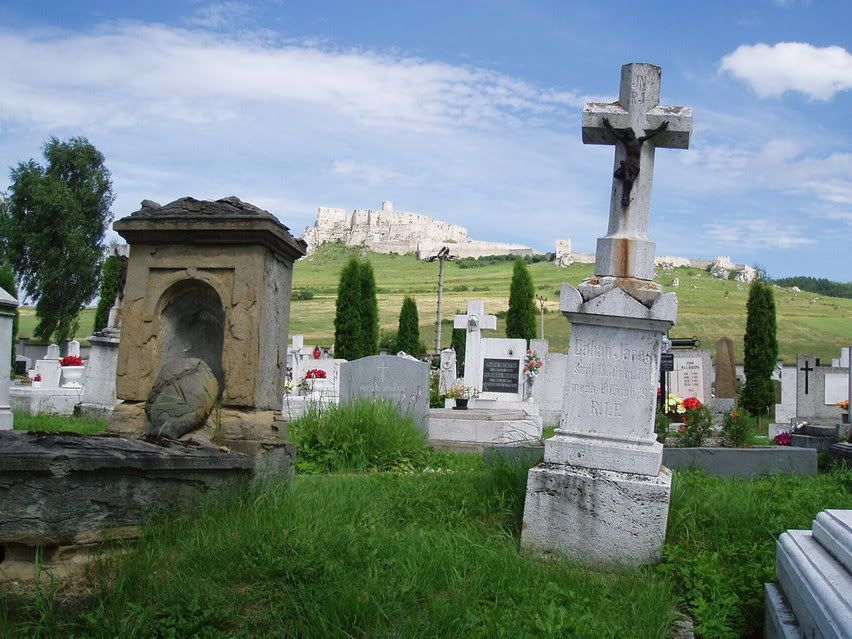
The castle, as seen from the town's cemetery (notice the planter in front of the grave behind the cross)
From the cemetery, we started our assault on the castle. I couldn't imagine charging up that steep hill in armor while arrows rained down from the hundreds of arrow slits carved into those beige walls. Any messenger carrying a declaration of war would probably stop halfway up, hands on his knees and panting, before going back down and telling the commander that it wasn't worth it.
Tourists and not archers now covered the walls, walking their immense length and soaking in the enormity of it. Built starting in the 13th century by the Hungarians, it had been steadily enlarged for the next four centuries until an accidental fire burned down everything but the mortared stone in 1780. We walked through the entrances of three separate walls in our constant uphill plunge to the oldest structures: the keep and the turret: the outer one had a courtyard so large you could put a mall into it (or a lot of livestock and frightened villagers), a wooden one being constructed by carpenters (probably to regulate tourist flow), and the inner one to the keep.
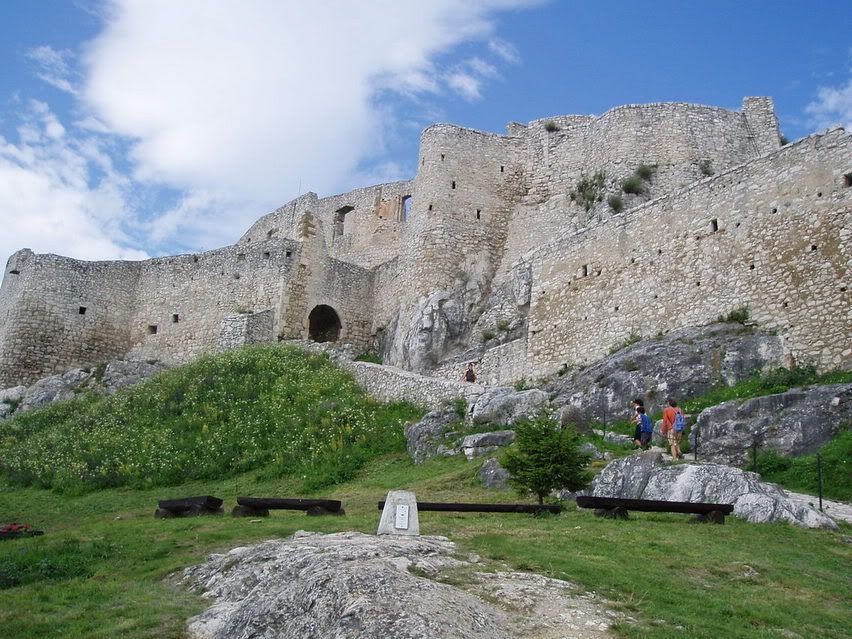
The castle keep
Once inside the inner one, Carrie and I both looked at an indentation in the wall and, with climber's instincts, both started walking towards it without saying anything to each other. Looking at it, there was probably once a ladder there, but we simply climbed the uneven stone to the top of the inner wall. There, we saw that there was a tiled area over the arch that admited us through the wall, and walking over to it, found a slit that ran over the arch, one we hadn't even noticed walking through it. It was proabably used to shoot arrows or drop oil onto attacking soldiers. Not only was it cool to be somewhere where most people didn't go (because most people don't climb UNESCO treasures), but the views were spectacular. Now, before anyone gets into a huff, it wasn't like these walls were crumbling. They had withstood 6 centuries. They easily withstood us.
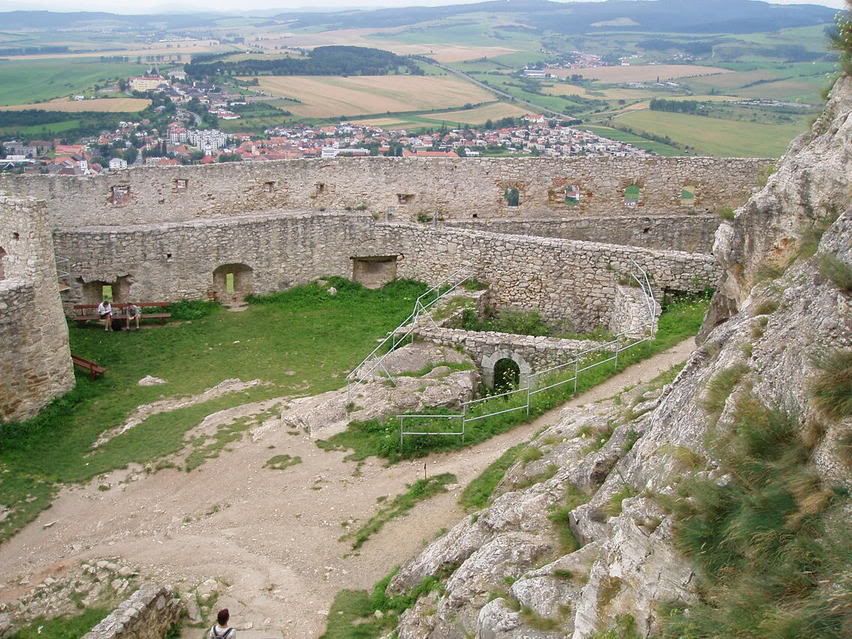
A view from the keep
The only views more spectacular than on the inner wall were those from the top of the turret. The stone steps leading up the narrow, winding stair had been polished smooth by centuries of soles and were slippery.
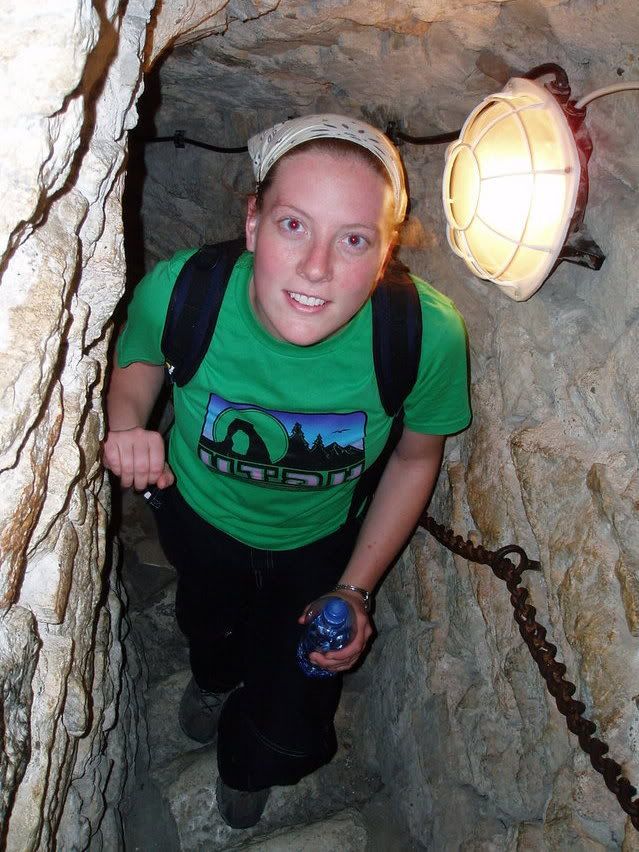
Carrie, on the way up the turret
Using a chain to assist, we got to the top, where we had a clear, 360 degree view of the Slovakian countryside We could see farmland, the wheat sprouting in brown rectangles, villages, thin black roads with tiny cars racing down them, patches of forest on undulating hills. We could no doubt easily see an approaching army.

A view from the turret
Following the stairs back down, we went even lower, into a dungeon holding a smattering of torture items, including Spanish boots, stocks, a primitive rack and a "torture table", where metal bands held prisoners down while they were whipped or worse. Also on display were some of the weapons used to defend the castle: cannons, mortars, armor and very large stone balls. The stone balls were rolled down the hill at an attacking army.
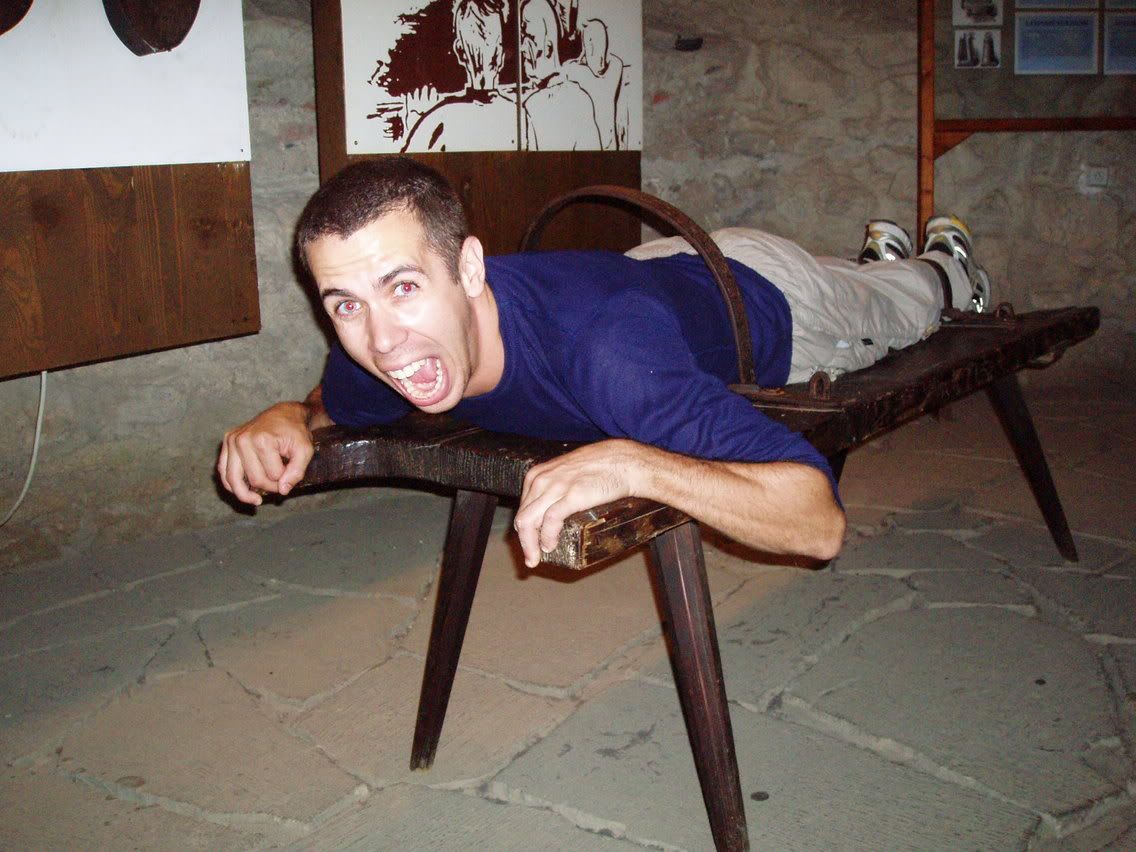
Getting tortured on the torture table
Just walking the breadth of the castle defeated us, so we retired back to the quiet little town in the Tatras that we were staying at: Tantranska Lominice.
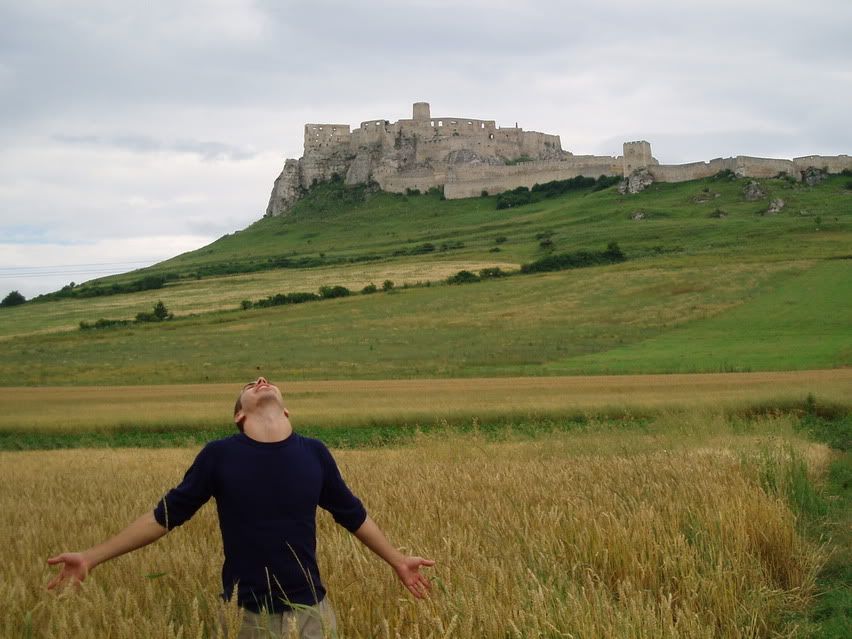
Me, being me (although the photo was Carrie's idea)
No comments:
Post a Comment